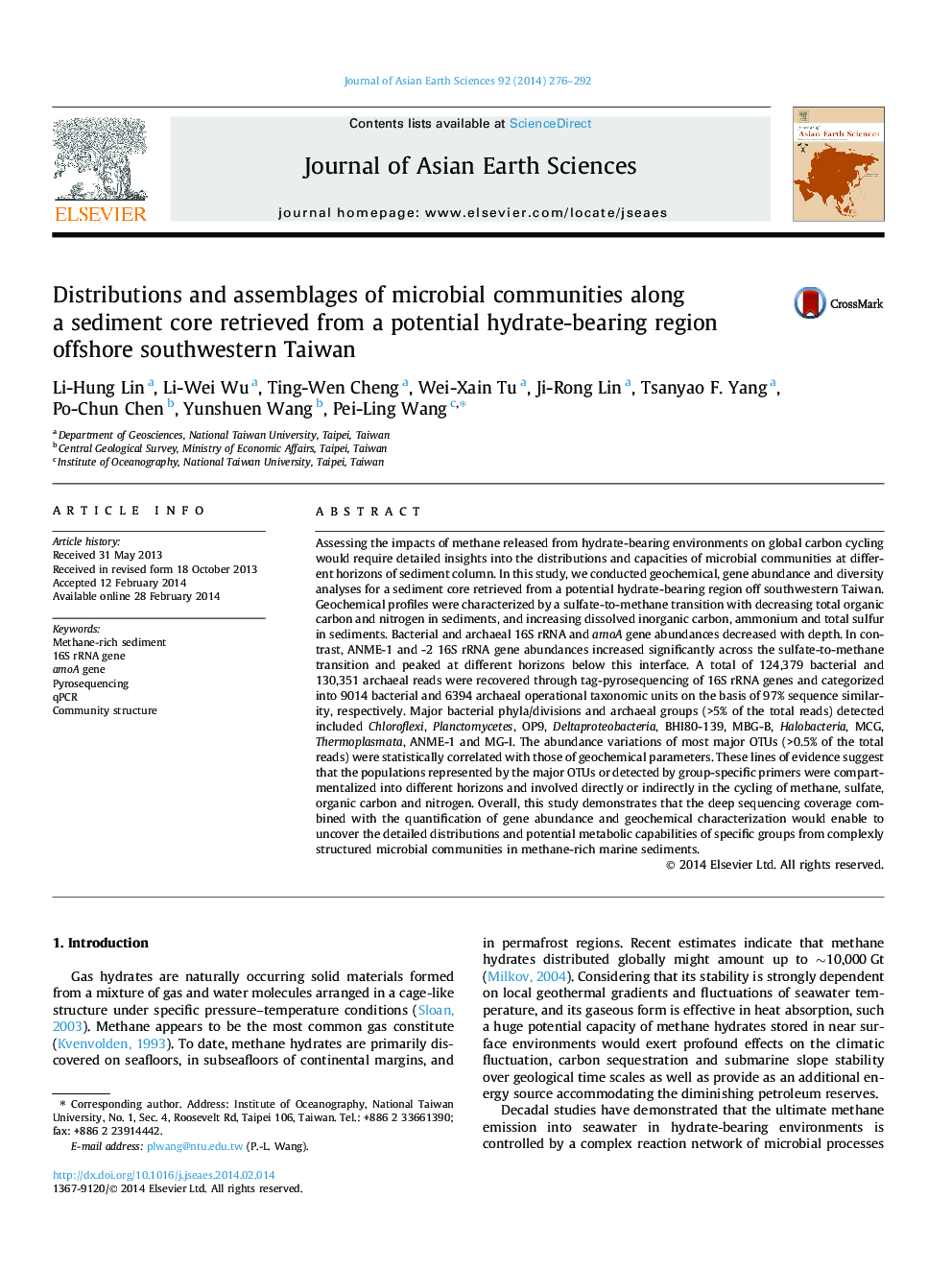| کد مقاله | کد نشریه | سال انتشار | مقاله انگلیسی | نسخه تمام متن |
|---|---|---|---|---|
| 4730536 | 1640376 | 2014 | 17 صفحه PDF | دانلود رایگان |
• Sediments from a hydrate-bearing region off southwestern Taiwan were analyzed.
• Geochemical data were integrated with gene abundances and community structures.
• Different ANME members proliferated at different depth intervals.
• OTU variations were statistically correlated with geochemical variations.
• Methane, sulfate, nitrogen and organic related metabolisms were inferred.
Assessing the impacts of methane released from hydrate-bearing environments on global carbon cycling would require detailed insights into the distributions and capacities of microbial communities at different horizons of sediment column. In this study, we conducted geochemical, gene abundance and diversity analyses for a sediment core retrieved from a potential hydrate-bearing region off southwestern Taiwan. Geochemical profiles were characterized by a sulfate-to-methane transition with decreasing total organic carbon and nitrogen in sediments, and increasing dissolved inorganic carbon, ammonium and total sulfur in sediments. Bacterial and archaeal 16S rRNA and amoA gene abundances decreased with depth. In contrast, ANME-1 and -2 16S rRNA gene abundances increased significantly across the sulfate-to-methane transition and peaked at different horizons below this interface. A total of 124,379 bacterial and 130,351 archaeal reads were recovered through tag-pyrosequencing of 16S rRNA genes and categorized into 9014 bacterial and 6394 archaeal operational taxonomic units on the basis of 97% sequence similarity, respectively. Major bacterial phyla/divisions and archaeal groups (>5% of the total reads) detected included Chloroflexi, Planctomycetes, OP9, Deltaproteobacteria, BHI80-139, MBG-B, Halobacteria, MCG, Thermoplasmata, ANME-1 and MG-I. The abundance variations of most major OTUs (>0.5% of the total reads) were statistically correlated with those of geochemical parameters. These lines of evidence suggest that the populations represented by the major OTUs or detected by group-specific primers were compartmentalized into different horizons and involved directly or indirectly in the cycling of methane, sulfate, organic carbon and nitrogen. Overall, this study demonstrates that the deep sequencing coverage combined with the quantification of gene abundance and geochemical characterization would enable to uncover the detailed distributions and potential metabolic capabilities of specific groups from complexly structured microbial communities in methane-rich marine sediments.
Journal: Journal of Asian Earth Sciences - Volume 92, 1 October 2014, Pages 276–292
